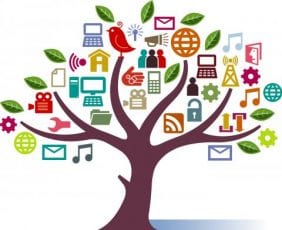Information Literacy

Wow, trying to define Information Literacy (IL) is a minefield. There is so many different definitions for it, it’s hard to know where to start. The module I am currently working through for Uni, is titled ‘Information Literacy’ and it does offer one very good piece of advice, it “…will depend on your interpretation of the term (Information Literacy) within a specific context and for a specific purpose which you decide (Charles Sturt University, M5, Topic 1, 2019). So with that thought in mind I revaluated the definitions I read.
The one that sits most comfortably for me would be the one set out by the Chartered Institute of Library and Information Professionals [CILIP], ‘Information literacy is the ability to think critically and make balanced judgements about any information we find and use. It empowers us as citizens to reach and express informed views and to engage fully with society’ (CILIP Information Literacy Group, 2016). CILIP (2016) went further to explain that IL relates to information in all its forms, including print, digital content, data, images and the spoken word.
Defining IL gets particularly confusing when you realise that it really does depend on the context of the information. As an example in the workplace IL might mean the ability for a person to work ethically and understand data protection (CILIP, 2016). While in education IL may mean being able to locate, filter, select and evaluate digital information.
The Alexandria Proclamation, for the United Nations Education, Scientific and Cultural Organisation (UNESCO, 2005) includes the following passage about IL.
Information Literacy empowers people in all walks of life to seek, evaluate, use and create information effectively to achieve their personal, social, occupational and educational goals. It is a basic human right in a digital world and promotes social inclusion in all nations.
While this isn’t a definition as such it does highlight the importance of being information literate.
At the end of the day, I am still formulating exactly the best definition for myself on what is IL in the context and for the purposes I require. Education, the workplace, everyday life and health.
References
CILIP Information Literacy Group. (2016). Information literacy definitions. Retrieved from https://infolit.org.uk/definitions-models/
Charles Sturt University. (2019). Information Literacy. In Introduction to Teacher Librarianship [ETL401 Module 5: Topic 1]. Retrieved from Charles Sturt University website: https://interact2.csu.edu.au/webapps/blackboard/content/listContent.jsp?course_id=_42380_1&content_id=_2633966_1
UNESCO. (2005). High-Level Colloquium on Information Literacy and Lifelong Learning. Bibliotheca Alexandrina, Alexandria, Egypt. Retrieved from https://unesdoc.unesco.org/ark:/48223/pf0000144820